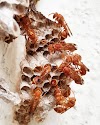Wildlife photography
Wildlife photography is a challenging and rewarding hobby that requires a combination of patience, skill, and the right equipment. To capture stunning images of animals in their natural habitats, you need to have a solid understanding of your camera and lenses, as well as the best ways to approach and photograph different types of wildlife.
Here are some tips for setting up your equipment for wildlife photography:
- Camera and lens: For wildlife photography, you'll want to use a DSLR or mirrorless camera that has a high resolution and fast autofocus. A camera with a high frame rate is also helpful for capturing action shots. As for lenses, a telephoto lens is essential for capturing distant animals. A lens with a focal length of at least 300mm is recommended for most wildlife photography.
- Tripod: A sturdy tripod is essential for keeping your camera steady when using long focal lengths. This is especially important when shooting in low light or in situations where you need to take multiple shots quickly.
- Camera settings: To capture the best images of wildlife, you'll need to set your camera to the appropriate settings. Use a fast shutter speed to freeze action, a wide aperture to create a shallow depth of field, and a high ISO to capture images in low light.
- Camera accessories: A good camera bag and a remote release are essential accessories for wildlife photography. A bag will keep your camera and lenses protected while you're out in the field, and a remote release will allow you to take pictures without touching the camera, reducing camera shake.
- Clothing and footwear: When out in the field, it's essential to wear comfortable clothing and footwear that is suitable for the terrain. Wearing camouflage clothing can also help you blend in with your surroundings and approach animals without disturbing them.
By following these tips and using the right equipment, you'll be well on your way to capturing stunning images of wildlife in their natural habitats. Remember to always be respectful of the animals and their surroundings and to always approach them with caution.
Here are some steps to help you learn wildlife photography:
- Study the basics: Learn about camera settings, exposure, composition, and lighting to get started.
- Research your subjects: Learn about the behaviour and habits of the animals you want to photograph, as well as their habitats and the best times to see them.
- Invest in equipment: Consider purchasing a high-quality camera and lens, as well as accessories such as a tripod, teleconverter, and flash.
- Practice, practice, practice: Go out and take photos of wildlife in your local area. Experiment with different techniques and settings to find what works best for you.
- Study the work of others: Look at the work of professional wildlife photographers for inspiration and to see what techniques they use.
- Join a photography community: Join online forums, and photography groups, or attend photography workshops to connect with other wildlife photographers and learn from their experiences.
- Be patient and persistent: Wildlife photography can be challenging, but with patience and persistence, you can capture stunning images.
Happy shooting!








